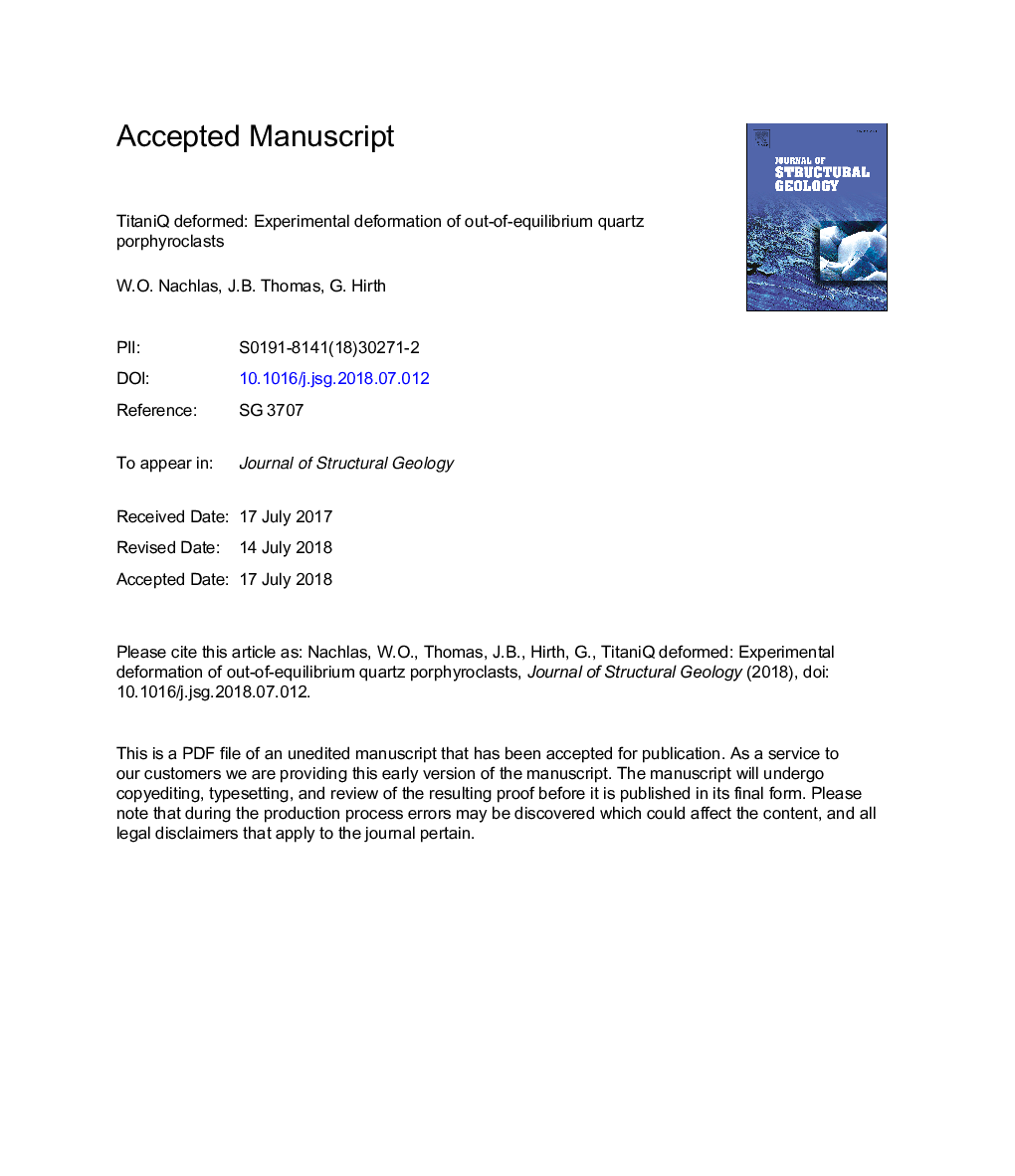| Article ID | Journal | Published Year | Pages | File Type |
|---|---|---|---|---|
| 10130543 | Journal of Structural Geology | 2018 | 49 Pages |
Abstract
The role of deformation on the equilibration of Ti concentrations in quartz was investigated by running experiments on out-of-equilibrium quartz crystals embedded as porphyroclasts within quartz aggregates. Quartz crystals were first grown from a hydrostatic fluid to set the initial Ti content; crystals grown at temperatures above (925â¯Â°C) and below (875â¯Â°C) the deformation temperature (900â¯Â°C) contain Ti contents â¼60â¯ppm higher or lower than the equilibrium solubility. These out-of-equilibrium quartz crystals were then deformed as porphyroclasts by embedding them in a matrix composed of either dry or wet quartz to induce two end-member deformation regimes, high-stress or low-stress, respectively. In high-stress experiments, quartz porphyroclasts contain deformation bands and undulose extinction, with some grains showing evidence for grain boundary bulging (BLG) recrystallization. In low-stress experiments, some grains deformed to high strains with minimal evidence for dynamic recrystallization, resulting in ribbon grains, whereas others recrystallized by dislocation creep processes, showing microstructural evidence for subgrain rotation (SGR) and grain boundary migration (GBM) recrystallization. By comparing quartz microstructures with patterns of Ti re-distribution in variably deformed and recrystallized porphyroclasts, we find that grains deformed to high strain with minimal recrystallization show little to no evidence for re-equilibration, whereas grains that recrystallized via grain boundary processes have equilibrated Ti contents that reflect the pressure-temperature conditions of deformation.
Keywords
Related Topics
Physical Sciences and Engineering
Earth and Planetary Sciences
Geology
Authors
W.O. Nachlas, J.B. Thomas, G. Hirth,
